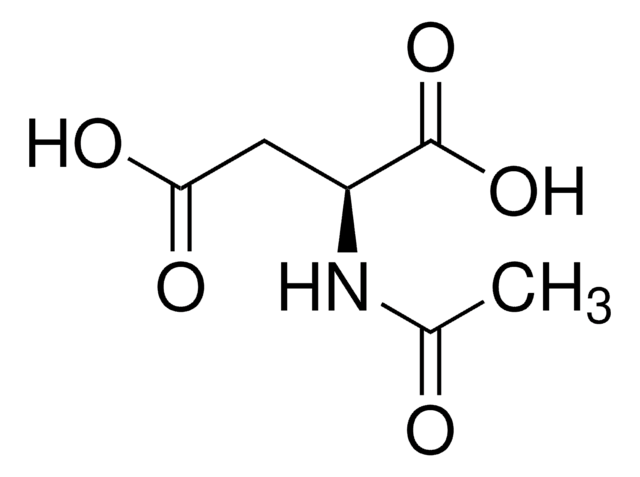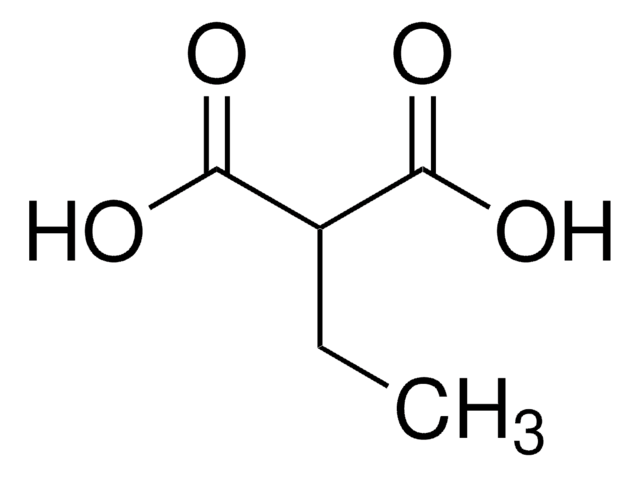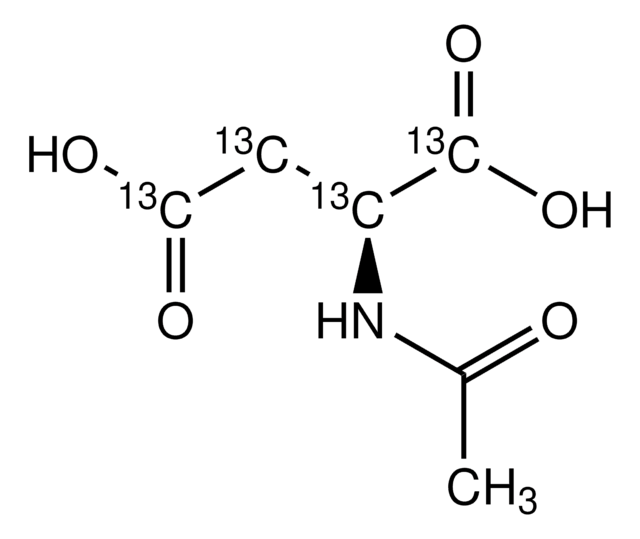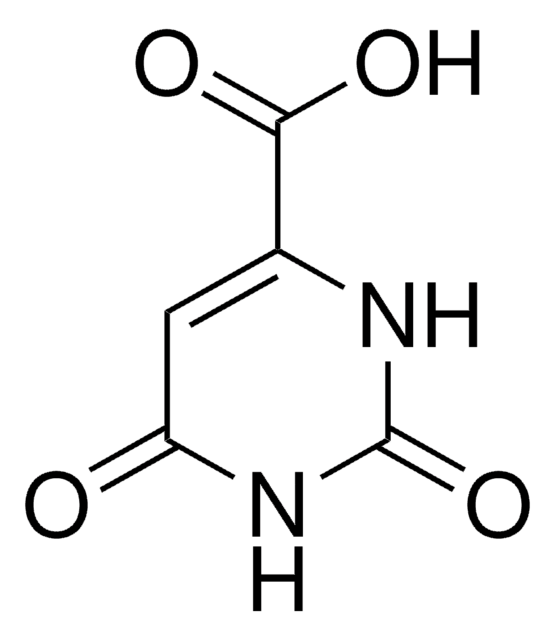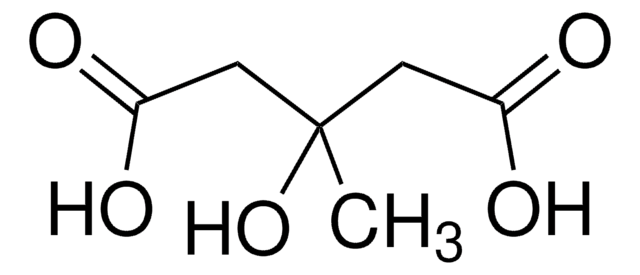All Photos(1)
About This Item
Empirical Formula (Hill Notation):
C6H9NO5
CAS Number:
Molecular Weight:
175.14
EC Number:
MDL number:
UNSPSC Code:
12352209
eCl@ss:
32160406
PubChem Substance ID:
NACRES:
NA.26
Recommended Products
Product Name
N-Acetyl-DL-aspartic acid, ≥95%
Quality Level
Assay
≥95%
form
powder
color
white to off-white
storage temp.
2-8°C
SMILES string
CC(=O)NC(CC(O)=O)C(O)=O
InChI
1S/C6H9NO5/c1-3(8)7-4(6(11)12)2-5(9)10/h4H,2H2,1H3,(H,7,8)(H,9,10)(H,11,12)
InChI key
OTCCIMWXFLJLIA-UHFFFAOYSA-N
Storage Class Code
11 - Combustible Solids
WGK
WGK 3
Flash Point(F)
Not applicable
Flash Point(C)
Not applicable
Personal Protective Equipment
dust mask type N95 (US), Eyeshields, Gloves
Choose from one of the most recent versions:
Already Own This Product?
Find documentation for the products that you have recently purchased in the Document Library.
L Boughamoura et al.
Archives de pediatrie : organe officiel de la Societe francaise de pediatrie, 14(2), 173-176 (2007-01-02)
Canavan disease or N-acetyl aspartic aciduria, is an autosomal recessive leukodystrophy characterized by spongy degeneration of brain. The disease is an inborn error of metabolism caused by aspartoacylase deficiency resulting from accumulation of N-acetyl aspartic acid in the brain. The
Zhongyu Hou et al.
Journal of clinical neuroscience : official journal of the Neurosurgical Society of Australasia, 17(5), 628-633 (2010-02-02)
In recent years, investigations of the pathologic mechanism of Parkinson's disease (PD) have mainly concentrated on the basal ganglia. However, recent studies have confirmed that pathological changes in PD are accompanied by functional motor changes of the cerebral cortex. Rats
J A Harvey et al.
The Biochemical journal, 108(2), 269-274 (1968-06-01)
1. Sample from the neocortex and piriform cortex of guinea pigs and rats were incubated in inulin-containing glucose-saline. Their intracellular (non-inulin) space contained 19-27muequiv. of Na(+)/g. of original tissue. These values were stable between 30 and 100min. after incubation commenced
Gregory Kaler et al.
The Journal of biological chemistry, 282(33), 23841-23853 (2007-06-08)
Organic anion transporters (OATs, SLC22) interact with a remarkably diverse array of endogenous and exogenous organic anions. However, little is known about the structural features that determine their substrate selectivity. We examined the substrate binding preferences and transport function of
Our team of scientists has experience in all areas of research including Life Science, Material Science, Chemical Synthesis, Chromatography, Analytical and many others.
Contact Technical Service